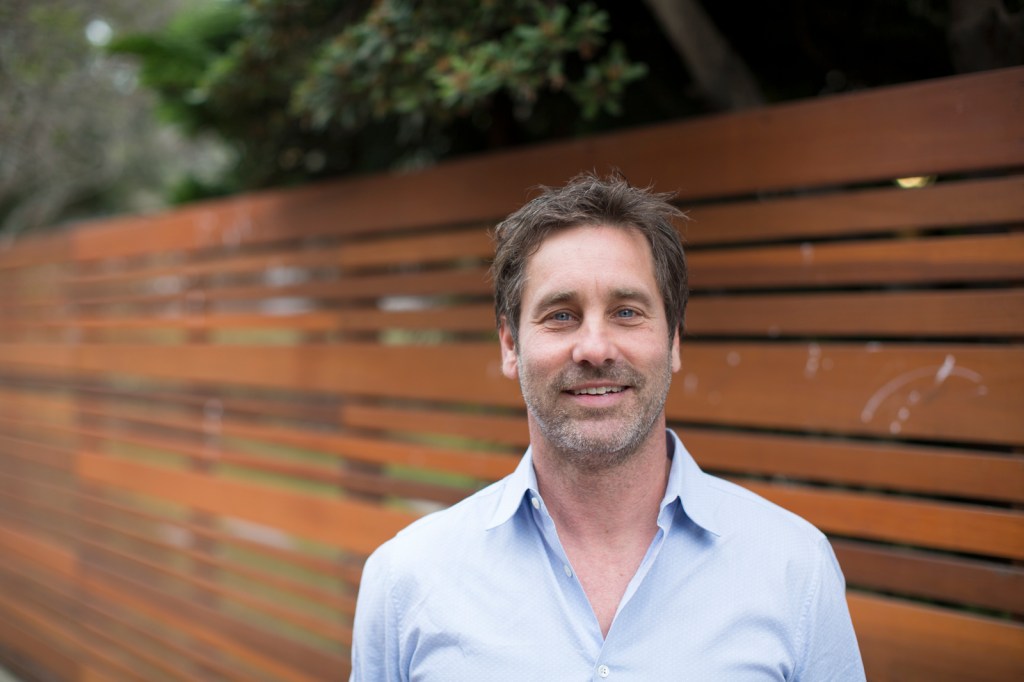Safe’s app answers the question ‘Have you been tested for STDs?’

The idea for Safe Group, a new Los Angeles company that’s developed a mobile app to track and verify a user’s sexual health, started on the Playa at Burning Man.
The company’s chief executive and co-founder Ken Mayer was dating someone at the time who demanded to see the results of a recent STD test before agreeing to have sex.
“I thought, ‘Wouldn’t it be cool if there was an app where I could pull in my test records and we could show them from the phone?’” Mayer tells me.
He discussed the idea with his paramour and their friend (and later co-founder) Lauren Weiniger, the founder of a social impact and entrepreneurship organization in Atlanta called GrowthCity, during their days at Black Rock City.
The relationship didn’t last, but the idea that was seeded on that late summer night in 2015 took root and eventually became Safe.
Now the company is readying for a major public launch at the Sundance Film Festival next year and enrolling people in a beta test thanks to $1.2 million in seed funding from Rivet Capital and a group of powerful individual investors and the addition of chief technology officer (and co-founder), Raj Jhaveri.

Safe Group chief executive, Ken Mayer
In the two years since the official formation of the company, Weiniger and Mayer went through several rounds of feasibility studies, and began untangling the incredibly complicated knots of red tape that kept patient medical records, insurers, health care providers and diagnostics companies from being able to effectively communicate with each other.
“We essentially had to build out a national healthcare company with physicians who are licensed across 50 states,” he said.
What Weiniger and Mayer have built (with help from Jhaveri over the last three months) is an integrated health care service that includes a network of physicians who can order tests that are covered by insurance plans; a direct connection to diagnostics and testing companies to offer the lowest cost for testing at any location in the U.S.; and that’s all in an app that adheres to the security standards of electronic health records and medical communications required by the government.
“Our plan is to use the STD verification as kind of a hook to collect a large user base of tech-savvy, health conscious people who will be the early adopters of this healthcare 2.0,” Mayer tells me.
The feat required some clever structuring of the various moving parts of Safe’s business, Weiniger said. There’s a physician-owned healthcare company called Safe Health made up of a network of physicians that the Safe Group brought together. That company has pledged its equity to Safe Group, which acts as a holding company and runs the app and technology side of the business.
Safe Group has also partnered with Quest Diagnostics and Lab Corp. so that test results are automatically uploaded into the app and so that anyone can get tested whether they have insurance or not.

Safe Group co-founder and chief operating officer Lauren Weiniger
Weiniger sees the main selling points for Safe as the ability to get tested anywhere with or without a doctor’s consultation at the lowest price possible and import that information into the app. “The biggest selling point about the app is that users can import their STD test results from anywhere. So any doctor, clinic or lab — whether they were tested through Safe or not,” Weiniger wrote to me.
The app will import the results of anyone’s last STD test, all a user has to do is put in the state where they were last tested, and the name of their doctor, clinic, or lab. The app will show the date and number of days, weeks, or months since someone’s last STD test.
The reason why Safe Group built out its healthcare company was to ensure that people covered by insurance would only have to pay their co-pay after filling out a short questionnaire, which replaces a physician’s consultation. Insurance companies require that a charge prove medical necessity, and the tele-medical consult provides that. For folks without insurance, the charge to get tested is $99.
“We have their most private information and we can start adding in features that make sense,” Weiniger said. “We want to end the spread of STDs in our lifetime. it’s the idea of putting it in people’s positive self interest. You can have an active prescription and reminders to take the pill… testing becomes the future and that becomes managed in the app… it’s a massive need and a massive market.”
Beyond that, the app will become an integrated source for all sorts of diagnostic tests and patient health records going forward, the company claims.
“Initially we’re prescribing the STD testing. The physicians… once the results come into our EHR…they then issue a positive or negative diagnosis. The physician will call the patient and prescribe treatment… And we will also be doing the treatment side… but not at the beginning,” said Mayer.
Eventually, Safe would also like to manage an online pharmacy that could distribute medication for the treatment of sexually transmitted diseases (initially) but expand into other areas of health.

Raj Jhaveri, Safe Group co-founder and chief technology officer
“Initially we’re going out and really positioning the company as a sexual health company,” Mayer reiterated. “Coming out with public outreach campaigns to get people to get tested and know their status and then getting to know the sexual health status of their partners before engaging in any risky activity [but] we plan to branch that out into fertility and erectile dysfunction.”
That broad vision attracted Jhaveri, a serial entrepreneur himself, to join the team. “It was the aspect of the future of gamification in terms of having these different types of badges and the aspect of how it evolves and takes telemedicine to the next level of medicine itself,” Jhaveri said.
A healthcare advisor to General Catalyst Partners and IBM Watson’s clinical oncology group, as well as a technical founder of multiple startups, Jhaveri noted that there were a number of telemedicine companies on the market but the way in which Safe was using sexual health as its point of entry was novel and its integrations were impressive.
“The way Safe has done it is all synchronized,” Jhaveri said. “It’s more seamless and a lot more user friendly… It’s enabling users with more functionality that’s traditionally been kept for physicians.”